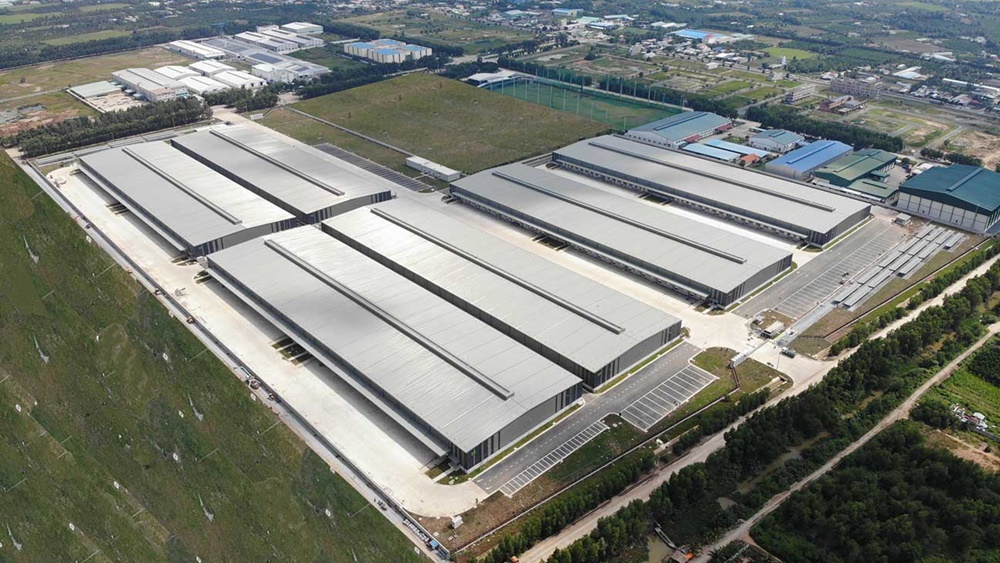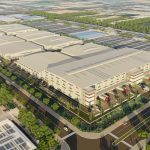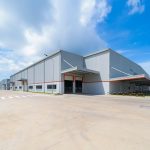Table of Contents
- 1 Vietnam Industrial Real Estate Market: Trends, Opportunities, and Regional Insights for 2025 and Beyond
- 1.1 Overview of the Vietnam Industrial Real Estate Market
- 1.2 Key Trends Shaping Vietnam’s Industrial Real Estate Market in 2025 and Beyond
- 1.3 Vietnam Industrial Real Estate Market Projections for 2025 and Beyond
- 1.4 Investment Opportunities in Vietnam Industrial Real Estate Market
- 1.5 Regional Dynamics in Vietnam’s Industrial Real Estate Market
- 1.6 Southern Vietnam: Ho Chi Minh City, Binh Duong, Dong Nai
- 1.7 Northern Vietnam: Hanoi, Hai Phong, Bac Ninh
- 1.8 Central Vietnam: Da Nang, Quang Nam, Quang Ngai
- 1.9 Infrastructure and Government Support
- 1.10 Investment Risks and Challenges
- 1.11 Conclusion
Vietnam Industrial Real Estate Market: Trends, Opportunities, and Regional Insights for 2025 and Beyond
The Vietnam industrial real estate market is rapidly evolving, spurred by the country’s strategic location, booming economy, and increasing foreign investment. As we approach 2025 and beyond, this sector is poised to continue its upward trajectory, offering significant opportunities for investors, developers, and businesses. Understanding the key trends and regional dynamics will be essential for stakeholders to navigate and capitalize on the burgeoning demand for industrial spaces.
Overview of the Vietnam Industrial Real Estate Market
Vietnam has positioned itself as one of the most attractive industrial real estate markets in Southeast Asia. With its central location, a rapidly growing economy, and favorable business climate, the industrial sector, including manufacturing, logistics, and warehousing, has become a vital engine for the country’s economic growth. This dynamic market is set to continue evolving, with projected growth rates and expansion plans indicating a sustained upward trend.
Key Trends Shaping Vietnam’s Industrial Real Estate Market in 2025 and Beyond
The Vietnam industrial real estate market is experiencing a range of transformations that will define its future. Key trends shaping the market include:
-
Demand for Industrial Parks
Industrial parks are in high demand across Vietnam, particularly in areas like Ho Chi Minh City (HCMC), Binh Duong, and Hai Phong. As foreign direct investment (FDI) and domestic manufacturing increase, companies are seeking larger and more specialized industrial spaces to accommodate production needs. -
Logistics and Warehousing Expansion
As Vietnam’s e-commerce sector continues to grow, there is an increasing demand for logistics facilities and warehousing. The need for automated warehouses, last-mile delivery hubs, and efficient distribution centers is becoming more pronounced. -
Sustainability and Green Buildings
Sustainable construction practices are gaining momentum in the industrial real estate sector. Developers are increasingly prioritizing eco-friendly, energy-efficient, and green buildings as part of a growing global trend toward sustainable development. -
Technological Advancements in Manufacturing
The rise of advanced manufacturing technologies, such as automation, artificial intelligence (AI), and Internet of Things (IoT), is driving the need for specialized smart factories and high-tech facilities. -
Infrastructure Development
Infrastructure development, including the construction of highways, ports, and airports, is essential to supporting the Vietnam industrial real estate market. The government’s investment in infrastructure is crucial to enhancing logistics capacity and improving connectivity between key industrial regions.
Vietnam Industrial Real Estate Market Projections for 2025 and Beyond
The Vietnam industrial real estate market is projected to grow significantly by 2025. Here are some of the key projections for the market:
-
Market Size and Value
The industrial real estate sector is expected to reach a market value of USD 13-14 billion by 2024, with a compound annual growth rate (CAGR) of 9-11% over the next five years. By 2029, the market size could reach up to USD 25 billion. -
Industrial Land Availability
Vietnam has approximately 80,000 hectares of industrial land spread across 400 industrial parks. By 2025, 60 new industrial parks are expected to come online, adding around 20,000-25,000 hectares of land, mainly focused on logistics and high-tech manufacturing. -
Land Take-Up
The industrial land take-up in major areas like Binh Duong, Dong Nai, Hai Phong, and Hanoi has increased by 5-7% in 2023. As demand for industrial space continues to grow, this trend is expected to continue in 2025.
Investment Opportunities in Vietnam Industrial Real Estate Market
The Vietnam industrial real estate market offers numerous investment opportunities for both local and international investors. With the growth of foreign direct investment (FDI), Vietnam’s expansion into global supply chains, and the rise in e-commerce, the demand for industrial spaces is expected to remain strong.
Key investment opportunities in the sector include:
-
Logistics and Warehousing
As e-commerce continues to boom, there is strong demand for logistics hubs, warehousing spaces, and automated facilities. Investors can benefit from the demand for modern logistics centers, particularly those located near transportation hubs like ports and airports. -
Advanced Manufacturing
The expansion of high-tech manufacturing in sectors such as electronics, automotive, and textiles presents opportunities for investors to capitalize on the growing demand for specialized manufacturing facilities. -
Green and Smart Factories
The trend toward sustainability and smart factories is creating a niche for eco-friendly, technology-driven industrial spaces. Investors focusing on green building developments and smart factory integration can expect long-term growth and profitability. -
Private-Public Partnerships (PPP)
The Vietnamese government is promoting public-private partnerships for infrastructure development, particularly in industrial park development and logistics hubs. Investors can explore opportunities in land development, facility construction, and logistics management.
Regional Dynamics in Vietnam’s Industrial Real Estate Market
The Vietnam industrial real estate market is highly regionalized, with different areas exhibiting varying degrees of development and demand. Here is an overview of key industrial regions:
Southern Vietnam: Ho Chi Minh City, Binh Duong, Dong Nai
Southern Vietnam remains the economic and industrial hub of the country. The demand for industrial spaces in Ho Chi Minh City (HCMC) and neighboring provinces like Binh Duong and Dong Nai continues to rise.
-
Ho Chi Minh City (HCMC):
As the largest commercial center in Vietnam, HCMC accounts for over 50% of the country’s industrial land. However, land availability is scarce, resulting in rising rents. The average rent for industrial land in HCMC is projected to be around USD 145-155 per sqm/year in 2024, marking a 15-20% increase from the previous year. -
Binh Duong and Dong Nai:
These provinces are becoming prime alternatives for companies seeking industrial space outside of HCMC. Industrial land rents in Binh Duong increased by 25-30% between 2022 and 2024, reaching USD 140-150 per sqm/year. -
Key Trends in Southern Vietnam:
The rise of advanced manufacturing sectors, such as electronics and automotive, is pushing demand for industrial facilities. Additionally, the increasing need for logistics and warehousing due to e-commerce growth is contributing to higher land rents.
Northern Vietnam: Hanoi, Hai Phong, Bac Ninh
The northern regions of Vietnam are rapidly emerging as key industrial hubs, particularly for electronics and logistics industries.
-
Hanoi and Bac Ninh:
Bac Ninh, a hub for electronics manufacturing, has seen industrial land prices increase by 15-20% per year. In Hanoi, industrial land rents are projected to rise to USD 130-140 per sqm/year by 2024. -
Hai Phong:
Hai Phong, with its deep-water port, is positioning itself as a logistics and manufacturing hub. Industrial land rents in Hai Phong are expected to average USD 130-140 per sqm/year by 2024, reflecting strong demand for industrial spaces.
Central Vietnam: Da Nang, Quang Nam, Quang Ngai
While still an emerging region, central Vietnam is becoming an attractive alternative for businesses seeking lower-cost industrial space.
-
Da Nang:
Da Nang is gaining attention as a logistics hub, with its proximity to key ports like Da Nang Port and Chu Lai Port. The average rent for industrial land in Da Nang is USD 110-120 per sqm/year, which is more affordable compared to southern and northern regions. -
Quang Nam and Quang Ngai:
These provinces are attracting light manufacturing businesses seeking more affordable alternatives to saturated southern and northern markets. Government incentives and tax breaks in these areas are encouraging growth.
Infrastructure and Government Support
The Vietnamese government has been investing heavily in infrastructure to support the growing demand for industrial spaces. Key developments include:
-
Long Thanh International Airport:
Set to be completed by 2026, this airport will significantly enhance logistics capacity in southern Vietnam, further boosting industrial growth in the region. -
North-South Expressway:
The North-South Expressway, currently under construction, will reduce transit times between industrial hubs by up to 40% once completed. -
Port Expansion:
Hai Phong Port and Saigon Newport Port are undergoing expansions to meet the growing demand for container throughput. Hai Phong Port aims to double its capacity by 2030. -
Government Incentives:
The government offers tax incentives, such as reduced corporate income tax rates, land use rights for up to 70 years, and special economic zones (SEZs) to attract foreign investments.
Investment Risks and Challenges
While the Vietnam industrial real estate market offers significant growth potential, investors must also consider potential risks:
-
Land Scarcity and Price Inflation:
As industrial demand increases, land availability in key regions such as Ho Chi Minh City and Binh Duong is becoming more limited, leading to rising land prices. -
Regulatory Risks:
Regulatory changes, particularly in environmental policies and zoning regulations, could delay projects and affect the profitability of investments.
Conclusion
The Vietnam industrial real estate market is on a strong growth trajectory, driven by infrastructure development, foreign investment, and rising demand for industrial spaces. With key regions like Southern Vietnam, Northern Vietnam, and Central Vietnam all presenting unique opportunities, investors can capitalize on this growth by targeting emerging markets and high-demand sectors like logistics, advanced manufacturing, and sustainable developments. However, potential challenges such as land scarcity and regulatory changes should be carefully managed for long-term success.
For detailed inquiries and site visits, contact Lusac Real today!
📞 Phone: +84-903-009-609
📧 Email: [email protected]
🌐 Website: https://www.lusacreal.com/



